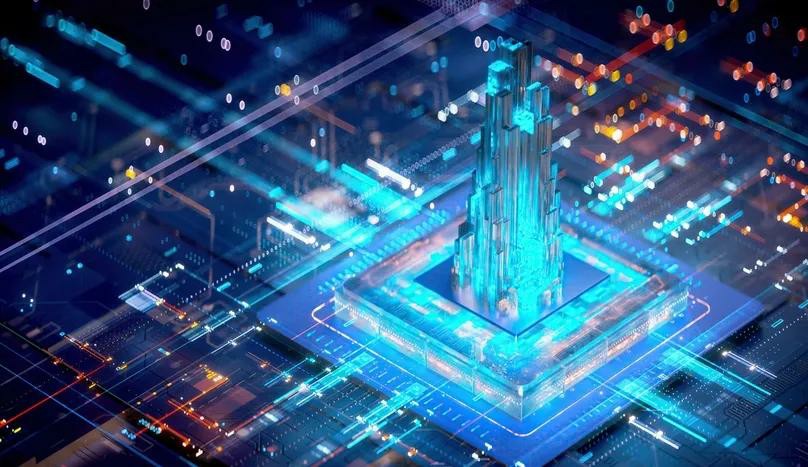Global IT supply chain
International transportation + IT O&M outsourcing + self-owned backbone network
Hello everyone! Today, let’s dive into GPU cloud servers. With the rapid advancement of GPU technology, its applications have expanded across various industries. But what exactly is a GPU cloud server? How does it differ from a traditional CPU? And why should you consider using one? In this article, we’ll answer all these questions in detail.

1. Differences Between GPU and CPU
1.1 Understanding GPU and CPU
GPU (Graphics Processing Unit) and CPU (Central Processing Unit) are two different types of computing chips. While CPUs excel at handling single-threaded tasks, GPUs are designed for parallel processing, handling multiple tasks simultaneously.
A simple analogy can help illustrate the difference:
CPU: Like a motorcycle—fast but can only carry one person at a time.
GPU: Like a bus—slightly slower but can transport many people at once.
If the task is to transport 100 people from point A to point B, a motorcycle would require 100 trips, whereas a bus can move many people in a single trip, making it more efficient for large workloads.
1.2 Application Scenarios
CPU: Best suited for tasks requiring complex logic and high precision, such as operating systems and office software.
GPU: Ideal for tasks involving repetitive calculations, such as image processing, video rendering, and deep learning.
2. What Is a GPU Cloud Server?
2.1 Definition
A GPU cloud server is a cloud-based computing service that allows users to access high-performance GPU resources remotely via the internet. This eliminates the need for purchasing and maintaining physical hardware, as users can simply pay for the computing power they need.
2.2 Advantages of GPU Cloud Servers
No Hardware Investment: Users don’t need to buy expensive GPU hardware or worry about maintenance and upgrades.
Scalability: Easily increase or decrease GPU resources based on business needs.
Cost Reduction: Pay-as-you-go pricing eliminates large upfront investments, making it ideal for small and medium-sized enterprises (SMEs) and startups.
2.3 A Simple Analogy
Think of a GPU cloud server like a shared gym. Instead of buying your own gym equipment, you can use high-quality machines on demand, without worrying about maintenance. Once you’re done, you leave—no long-term commitments or overhead costs.
3. Why Choose a GPU Cloud Server?
3.1 Limitations of Local GPUs
High Costs: Purchasing and maintaining GPU hardware requires significant investment.
Complex Management: Hardware upgrades and troubleshooting require a skilled IT team.
Resource Waste: Business demand fluctuates, often leading to either underutilized or insufficient GPU resources.
3.2 Benefits of GPU Cloud Servers
On-Demand Usage: Pay only for what you use, avoiding resource waste.
No Maintenance Required: Cloud providers handle all hardware maintenance and upgrades.
Rapid Deployment: Spin up GPU instances in minutes, accelerating time-to-market.
3.3 Ideal Use Cases
Deep Learning: Training complex neural networks.
Graphics Rendering: Producing high-quality videos and animations.
Scientific Computing: Handling large-scale data analysis and simulations.
4. Applications of GPU Cloud Servers
4.1 Data Science & Machine Learning
GPU cloud servers accelerate large dataset processing, enabling data scientists and machine learning engineers to train and optimize models faster.
4.2 Game Development
Game developers leverage GPU cloud servers for high-quality graphics rendering and physics simulations, enhancing visual performance.
4.3 Video Editing & Animation
For professionals working with high-resolution videos and special effects, GPU cloud servers significantly reduce rendering time, improving workflow efficiency.
4.4 Financial Analysis
Financial analysts use GPU cloud servers to process real-time trading data and complex financial models, leading to more accurate decision-making.
4.5 Bioinformatics
In genomics and biological simulations, GPU cloud servers expedite data processing and simulations, helping researchers achieve faster breakthroughs.
5. How to Choose a GPU Cloud Server
5.1 Performance Requirements
Choose the right GPU model based on your workload. For deep learning, high-performance GPUs are necessary, while entry-level GPUs suffice for lighter tasks.
5.2 Cost Control
Compare pricing models of different cloud providers to select the most cost-effective option. Common billing methods include pay-as-you-go and reserved instances.
5.3 Scalability
Opt for a cloud provider that supports elastic scaling to accommodate future business growth.
5.4 Technical Support
Choose a provider with reliable customer support to ensure timely assistance when issues arise.
6. Conclusion
GPU cloud servers are becoming the go-to solution for businesses and individuals due to their high performance, flexibility, and cost efficiency. Whether for deep learning, graphics rendering, or scientific computing, GPU cloud servers offer unparalleled computational power.
Selecting the right GPU cloud server can accelerate your business operations and enhance competitiveness.
We hope this guide has helped you understand GPU cloud servers better. If you have any questions, feel free to consult GPU cloud service provider like Ogcloud!

International transportation + IT O&M outsourcing + self-owned backbone network

Cellular chips + overseas GPS + global acceleration network

Overseas server room nodes + dedicated lines + global acceleration network

Global acceleration network + self-developed patented technology + easy linking

Global Acceleration Network + Global Multi-Node + Cloud Network Integration


